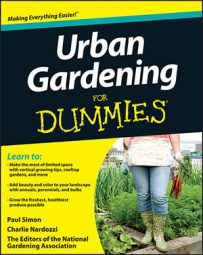To start an urban community gardening program, begin by assessing the level of interest in your community. The first step is to find like-minded folks to help you organize the project. Ideally, you’d like to recruit at least five to ten families interested in helping. Survey neighbors to see who would like to participate and hold planning meetings at least monthly to get the ball rolling.
Consider getting a partner or sponsor for the project, such as a local church, parks and recreation department, a nonprofit organization, or a local business. They may be able to provide land, supplies, organizational help, and money to get the garden up and running.
Once you’ve established that there is a strong community interest in beginning a community gardening program, and you’ve checked to see if there isn’t already an established community garden nearby, you’re ready to organize and start one yourself!
How to select a site for a community garden
Look for an open piece of land that might serve the purpose, and contact the owner for permission to use it.
Make sure the site gets at least six hours of sun per day. And be sure to test the soil for nutrients and for contaminants such as lead and other heavy metals. The site will also need a water source, easy access, and, possibly, parking.
The best scenario is to find a landowner who is enthusiastic about the plan and is willing to provide a written, multiyear lease. You don’t want to establish your garden just to have to move it in two years’ time!
How to develop your community garden site
Once the site is secured, your group can start to plan its development! Involve as many stakeholders as is practical. The more people involved in the design and planning of the gardens, the more help you’ll have in building and maintaining your community garden.
Schedule workdays and clean-up days. Measure the site, determine the size of individual plots, and mark them. Amend the soil as necessary with nutrients and compost to build up the health of the land. Water is crucial to a garden’s success. If you’re irrigating, plan and install an irrigation system before opening the garden to residents.
Consider including community areas where you can plant trees, shrubs, and flowers for general beautification. Some community gardens have special areas just for kids to garden. Create some shady areas where people can sit to rest, have a picnic, and gather and socialize.
How to organize your community garden
Your garden group must be well organized if the community garden is to be successful. You’ll need to determine how much to charge for plots and create a budget for spending the money.
While most of the money will probably pay for tilling, soil amendments, and water bills, consider soliciting donations from individuals and local businesses for special additions such as a tool storage shed, a sign, and a bulletin board (a good way to notify gardeners of upcoming events and meetings).
Build a compost pile in one area of the garden where everyone can dump their dead plants, and add a trash barrel for dumping non-biodegradable materials, but only if you can arrange for it to be emptied on a regular basis.
Don’t forget rules! Community gardens should have rules of conduct that all the plot holders read and agree to when they register. Rules can govern pesticide use, watering, planting deadlines, weeding requirements, and the clean-up schedule for garden plots at the end of the season.
How to manage your community garden
A group of dedicated, organized volunteers will help keep your urban garden growing well and diffuse misunderstandings before they become problems. That said, here are a couple of common issues that arise for community gardeners:
Most private landowners will not sign a lease unless your group has liability insurance, so secure coverage before opening the gardens.
Provide signage that clearly identifies the area as a community garden, and include names of sponsors and contact people. Let the neighbors know this is their garden, too — this will help thwart vandalism.
Celebrate and have fun. Be sure to hold social gatherings in the garden, especially in the summer and fall, to celebrate the garden and all its bounty. See “Hosting harvest festivals” for more on harvest festivals and community gatherings.

